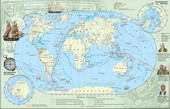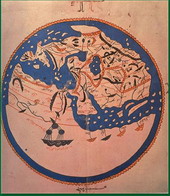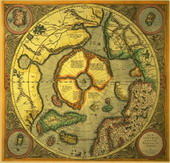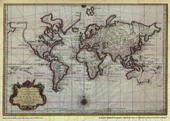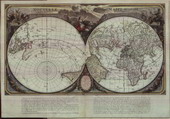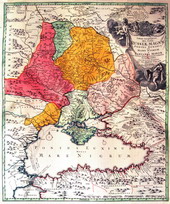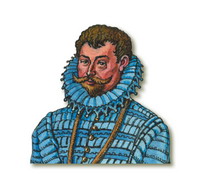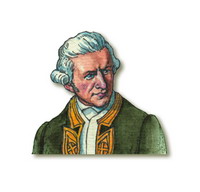In the 1768-1771 biennium, a half century after Abel Tasman, the English navigator James Cook discovered Eastern Australia and began its colonization. Its present name "Australia" ("South") received only continent in 1814
During his voyage Cook proved that New Zealand - are two islands separated by the Strait, not an unknown part of the Southern mainland. However, James Cook explored actively pryantarktychni latitude. In 1772-1775 he made it round the trip around Cape Horn at the longitude, along the boundaries of drifting ice. Expedition Cook was the first in the history of navigation crossed the southern polar circle. Although only some hundreds of miles separated from Antarctica Cook then, he was convinced that no space is left, where would be the mainland, except near the poles of the reach of navigation.
During the third expedition Cook were investigated area along the U.S. coast of the Bering Strait open and Hawaii, where he was killed in a skirmish with natives.
In 1802 the captain-lieutenant of the Russian Navy John Kruzenshtern proposed project circumnavigation for direct trade link between the Russian and Baltic ports in Alaska. He was appointed head of the first Russian round-the expedition, which in August 1803 on two sailing vessel "Hope" and "Neva" went to Kronstadt. The first ship commanded by himself Kruzenshtern, the second - his companion, a Ukrainian by birth, George Lysyansky. Among the officers of the expedition was still young Thaddeus Bellingshausen. In March 1804 the ship obihnuly Cape Horn and through three weeks of joint swimming near the Hawaiian islands separated. "Neva" headed for the coast of Alaska, and "Hope", arrived in Petropavlovsk-Kamchatsky, where went on a diplomatic mission in Nagasaki. In 1805, banks were explored Sakhalin Island, and north-west coast of North America, and in 1806 the ships met, returned to Kronstadt. Generally during this expedition opened Mizhpasatnu flow in the Atlantic and Pacific Oceans, conducted important research and collected numerous data on water, atmospheric pressure, tides in various regions of the oceans.
Never stopped looking south polar land. Furthest from us and strongest in nature continent - Antarctica was discovered in Russian expedition (1819-1821 biennium), headed by Mikhail Lazarev and Thaddeus Bellingshausen. On ships Vostok and Mirny in January 1820 reached the shores of the ice continent, and in one of naynedostupnishyh for Antarctica.
The first attempt to conquer the North Pole made a Norwegian traveler Fritof Nansen on the ship "Fram". Planning an expedition, Nansen did not expect that the ship will be exactly over the pole, he intended to leave the ship and reach the Pole on foot. September 22, 1893 introduced a traveler "Fram" in the icy environment, giving him vmerznuty, and when the ice under zimknuvsya ship, as he lay on the icy bed, start the drift, which lasted for eighteen months. March 14, 1895 Nansen left the ship, sled dog to continue its journey north. April 8 it reached 86 ° 14 'latitude Mo - the northernmost point where a person reaches. However, due to lack of food and other essential things a traveler had to turn back before reaching the pole.
First, who were lucky to reach the North Pole was Robert Piri - American traveler researcher. This happened on April 6, 1909. His expedition was to provide a full Navy U.S.. Conquest of the North Pole was always the main goal of Robert Piri, he wanted to make during his four previous Arctic expeditions. As a result of one of these famous American first convinced that Greenland is an island.
In Piri tried to open the North Pole and a Norwegian traveler penguins, one of the most important achievements of determination of the geomagnetic North Pole. However, the discovery that has already conquered the North Pole, Amundsen has directed all its efforts on reaching the southernmost point of the Earth. August 9, 1910 by celebrated physicist Fritofa Nansen ship "Fram" Norwegian went to Antarctica. And actually to the South Pole expedition left October 20, 1911. But here he was a rival - English navigator Robert Scott, who two years before doing research in Antarctica. Scott calculated that to reach the South Pole and return him back to take 145 days. With Scott vehicles more likely to rely on the horses and tractors, not paying enough attention to the dogs. He went on tour November 2, 1911. However it is achieved Pole Amundsen first successfully by the selected route and, more importantly, use of dog upryazhok. This happened on December 14, 1911. While the English expedition through various unforeseen circumstances and difficulties made it only January 17, 1912. Turning back, all five British explorers died. On the road Robert Scott led the diary, the last record which was done March 29. Body of travelers found only eight months after a special search expedition. In his dying note Captain Scott wrote: "The reasons for failure not caused by deficiencies in the organization, but failed in those risky activities, which we had to take." Amundsen successfully returned from his Antarctic expedition, followed by another aerial survey carried out by the Arctic.
In the early twentieth century there was a dire need for development east of the Northern Sea Route, although the possibility of using prypuskalasya since the sixteenth century. First route was covered with one winter's expedition in 1878-79 Swedish explorer Nils Nordenshelda on schooner Vega. And do it for the first time managed to navigate a Russian polar expedition led by Otto Schmidt in 1932: slightly more than two months was overcome path from the mouth of the Northern Dvina to the Bering Strait. Besides the above mentioned results of two expeditions of discovery were Schmidt archipelago Severnaya Zemlya, and many other islands as well as microbiological, mapping, oceanographic research, initiated a comprehensive study and development of this severe region.
A significant event in the history of navigation was piracy that was born in the Mediterranean even in ancient times. The main craft pirates of all ages was prey merchant ships. However, there also were the pirates, which you can put on a par with the most famous travelers and explorers. Among them: the second round traveler Francis Drake and Thomas Cavendish, who rounded third in the Ocean Earth history. William Dampier in his wanderings rounded globe three times and rescued from captivity on a desert island sailor, who became the prototype of Robinson Crusoe by Daniel Defoe novel on. Not hrebuvaly pirate craft brave pioneers of the northern areas Normans. In general, the pirates opened many small islands in the Caribbean, Indian Ocean and near Australia.
Sometimes in history, pirates have become a tool in the military-political confrontation between major powers. At the beginning of the sixteenth century the Spaniards closed to all foreign ships access to the sea, omyvaly their overseas property. At that time the Spanish navy was the strongest in the world. Such a policy could not cause of protests other maritime powers of Europe, and their main weapon in this confrontation were pirates. Initially active struggle with Spain, plundering its trading galleon in the Caribbean, were French pirates, encouraged their king. Then they were joined by the English. The most famous pirates of that time was Francis Drake, who with the blessing of Queen Elizabeth caused significant loss of Spaniards, and Thomas Cavendish. The attacks against British pirates made a considerable "contribution" in defeat invincible Armada - Navy sent the Spanish King Philip II to conquer England. One hundred years in the Caribbean Sea has ruled another Englishman - the legendary John Morgan.
Piracy in the Indian Ocean can be divided into two stages. The first lasted until the arrival of Europeans here, the second - actually European. Actors were the first Arab and Malay pirates who do not go beyond the coastal waters. Pirates first Europeans here were the Portuguese, subsequently joined by British and Dutch.
 English
English
